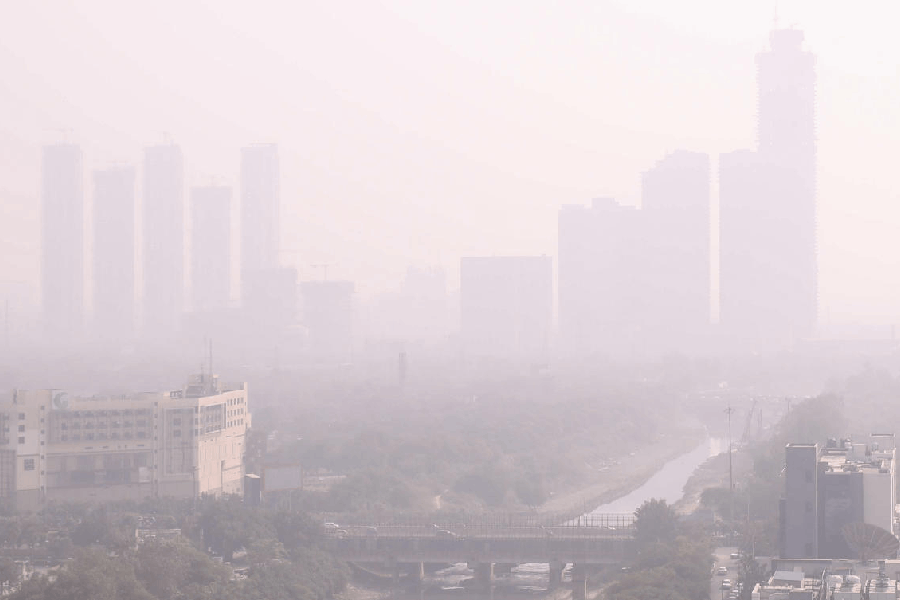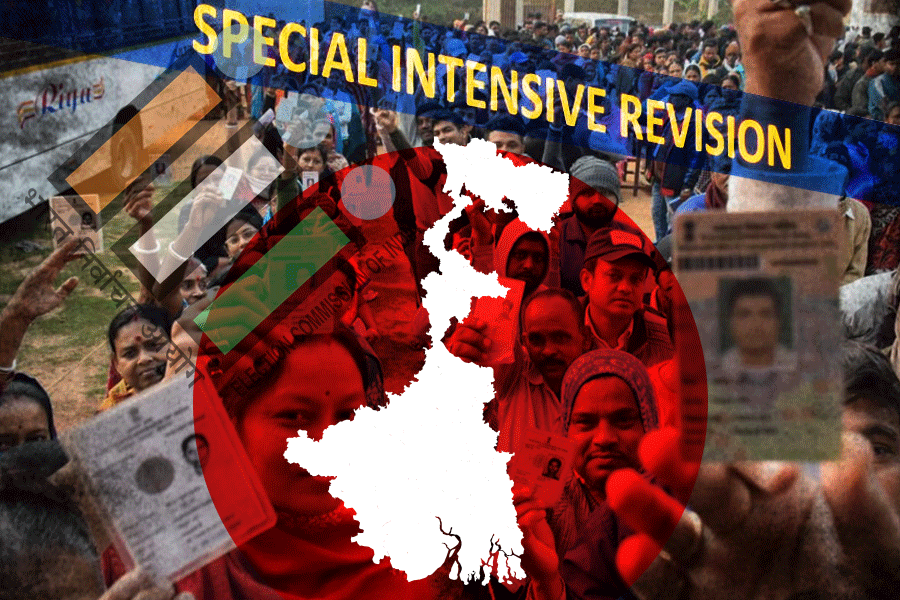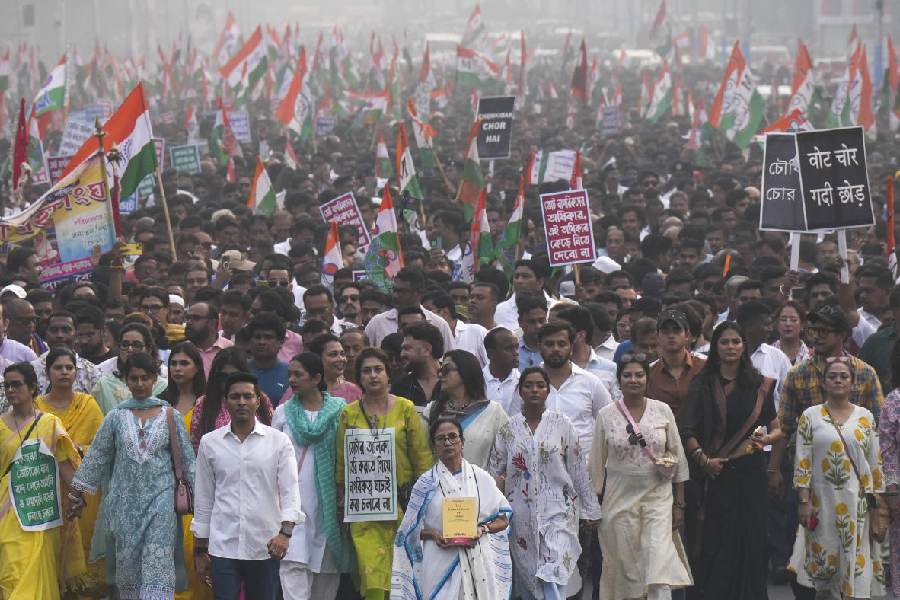In 1989, the poet and scholar, A.K. Ramanujan, published a brilliantly far-reaching essay entitled 'Is There an Indian Way of Thinking?'. It was still possible for him, in the Eighties, to spring such a question unabashedly, even while teaching in Chicago, and to then answer it in the affirmative, using a wealth of learning and wit. 'Some lament, others celebrate India's un-thinking ways. One can go on forever', he wrote. The sly hyphen in 'un-thinking' plays with the twinned ideas of India's capacity for thoughtlessness and for unsettling - even undoing - certain accepted, and acceptable, habits of thought.
Ramanujan's 'Poona Train Window' is, in this sense, an un-thinking poem. It contemplates - with an unsettling blankness - the very Indian act of public defecation. 'I look out the window./ See a man defecating/ between two rocks, and a crow.' In the 'afterhush' of one train passing another, the viewer also notices 'a rush of whole children', 'three women with baskets on their heads' (one of them 'balancing...a late pregnancy'), buffaloes, flies, gulls. His 'railway tea', meanwhile, 'darkens like a sick traveller's urine'. But Ramanujan brings his poem back, at the end, to the initial vision, with the same sort of control that allows Bach to bring his thirty Goldberg variations back to the initial, sublimely simple, aria: 'I see a man/ between two rocks./ I think of the symmetry/ of human buttocks.'
The poem makes us look; it also quietly makes us think. What exactly are we being made to do when we serenely meditate, in public, on a part of the human body performing an act, both of which are considered to be intensely private in most civilized societies? In what sort of a society, then, is this poem set? How does this society bind together, or isolate from one another, the various people in the poem's play of gazes - viewer, defecator, poet and reader? Does this classical, sophisticated poem, by refusing to lament or celebrate, mark a moment of failure, or a high point, in the evolution of human civility?
I am reminded here of another great English poem about looking out of a train - 'Whitsun Weddings' by Philip Larkin, England's grimmest poet of suburban despondency. Rushing towards London in the 'tall heat' of an English summer, looking out on 'where sky and Lincolnshire and water meet', what if Larkin's viewer suddenly came upon the scene in Ramanujan's poem? What turn would the poem have taken then? Would the English countryside, or suburbia, have been more interesting if such a thing were to happen? Perhaps Larkin's poetry would have been less grey, less spirit-crushing. But at what cost?
Most trains coming into Mumbai's Victoria Terminus run all the way along the city's infamous Dharavi slum. The train sometimes seems to slice through the row of shanties, affording the commuter a vertical cross-section of private lives. The minutiae of everyday existence, the mystery of other interiors and intimacies, present themselves to the speeding gaze, indifferent to its discomfiture, voyeurism or unconcern. I remember one droll, enigmatic tableau - a man squatting on his haunches and tenderly feeding, from a bowl with a teaspoon, a goat tied to his bed-post.
The relationship between privacy and public spaces in urban India is formed by a whole range of often contradictory behaviour and attitudes, most of which are what Ramanujan would have called unthinking ways. This relationship and these attitudes are crucial not only to the growth or decline of Indian cities, but also to how we experience and present ourselves as individuals in these public spaces. Individualism - in the Western liberal sense - is routinely seen as alien to Indian life. Emerging from the feudal idea of the jati with its hierarchies of caste, kinship and occupation, the notion of the individual is supposed to get taken up into various forms of collectivity, chiefly the family. Ramanujan - borrowing from the language of linguistics - sees Indians as 'context-sensitive', their lives essentially 'relational', contained within 'concentric nests'.
This may be true with respect to the family. But a much more resistant form of individualism - neither Western, nor quite liberal - comes into play when the 'context' shifts from the familial to the civic. The notion of a collective responsibility to public, civic spaces seems to be quite alien to Indian city-dwellers. Cities tend to become agglomerations of domestic interiors, a citizen's sense of belonging remaining confined within these little units.
What we do with domestic waste is most revealing. Even the most genteel households mark their boundaries by throwing their trash just outside their carefully demarcated limits. Staircase landings, pavements and streets are all 'public' domains, the dirtying of which endorses the hygiene and ownership of the 'private'. There are all sorts of taboos on certain intimate functions of the body; but the public disposal of the related refuse is a matter of general unconcern. Like the ribald emptying of chamber-pots in Elizabethan London, shops open and close by vigorously sweeping their dirt into the bit of pavement just outside. It is up to the passers-by to dodge the clouds of dust or the lash of a zealous broom.
Domestic hygiene becomes a means of marking out private territory. In this, the nuclear family acts as a unit of privacy pitted against the encroachments of the city. As a result, such spaces as elevators, compounds, pavements and even hospitals, crematoria, government offices, public toilets and parks remain nobody's business. Littered and despoiled, they never become part of a civic identity. Parks are renovated, lit up against vice and then kept locked up, looking vaguely municipal. They never quite come to life in the same way as, say, the piazza and its myriad life are integral to Mediterranean sociability. The sense of belonging to a city expresses itself, if at all, in such ultimately useless passions as nationalizing its name.
In India, these practices of domestic hygiene are exactly mirrored in attitudes to personal hygiene. And here the body becomes the vehicle of a fastidiously guarded purity (with its own long history), which is, perhaps, an individualism of sorts. Here again, through 'Poona Train Window', we must think of the lower bodily functions and of a few relatively higher ones as well. Waking up to the noise of general and furious hawking as part of the neighbourhood's morning ablutions has always been a rather comforting routine for many Calcuttans.
In a city like Calcutta, teeming with a large migrant and shelterless population, notions of privacy get fundamentally altered. So much of the intimate life of human bodies takes place entirely in the public eye. Walking through the city during mid-day, when the homeless bathe in the corporation taps, or at night, when they are getting ready to sleep, could be a rich experience for the compulsive metropolitan voyeur. Yet human beings must defecate, urinate, expectorate, menstruate, procreate, decay and die. They must also somehow cling on to shreds and patches of dignity and of privacy, however ridiculous these notions may be in certain lifestyles.
This delicate ecological balance is maintained in Indian cities through a system of averted gazes. If a man urinating against a private wall manages not to meet the eyes of those who walk past, then his act somehow remains uncommitted, his privacy remains inviolate. Similarly, the eyes of beggars, lepers and cripples must never be met. Private acts in public spaces - out of compulsion or callousness - turn privacy into a state of mind, into even a willed state of illusion or disavowal, rather than a physically achievable and necessary condition. As a writer in this column has recently put it, the 'worst' then becomes 'good enough'.
In Ramanujan's poem, the defecator turns away from the train, preferring to bare his posterior to the public gaze, to meeting the passengers' eyes with his own. But this viewer refuses to avert his gaze, not out of any humane engagement, but out of a detached aesthetic fascination with 'the symmetry of human buttocks'. Ramanujan was aware of the perversity of this response, and saw the tendency to sanitize and simplify as central to Hindu culture. Another poem in the same volume - called 'The Hindoo: the only risk' - ends with these lines: 'At the bottom of all this bottomless/ enterprise to keep simple the heart's given beat,/ the only risk is heartlessness.'
 Wednesday, 05 November 2025
Wednesday, 05 November 2025









